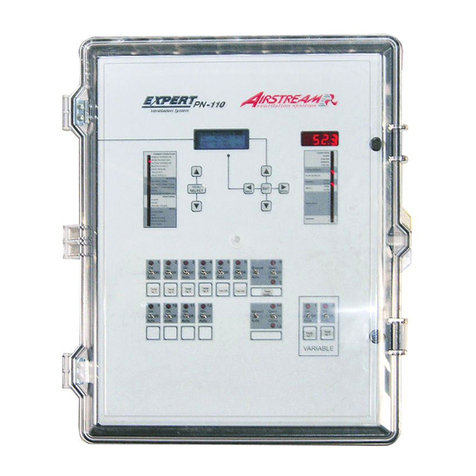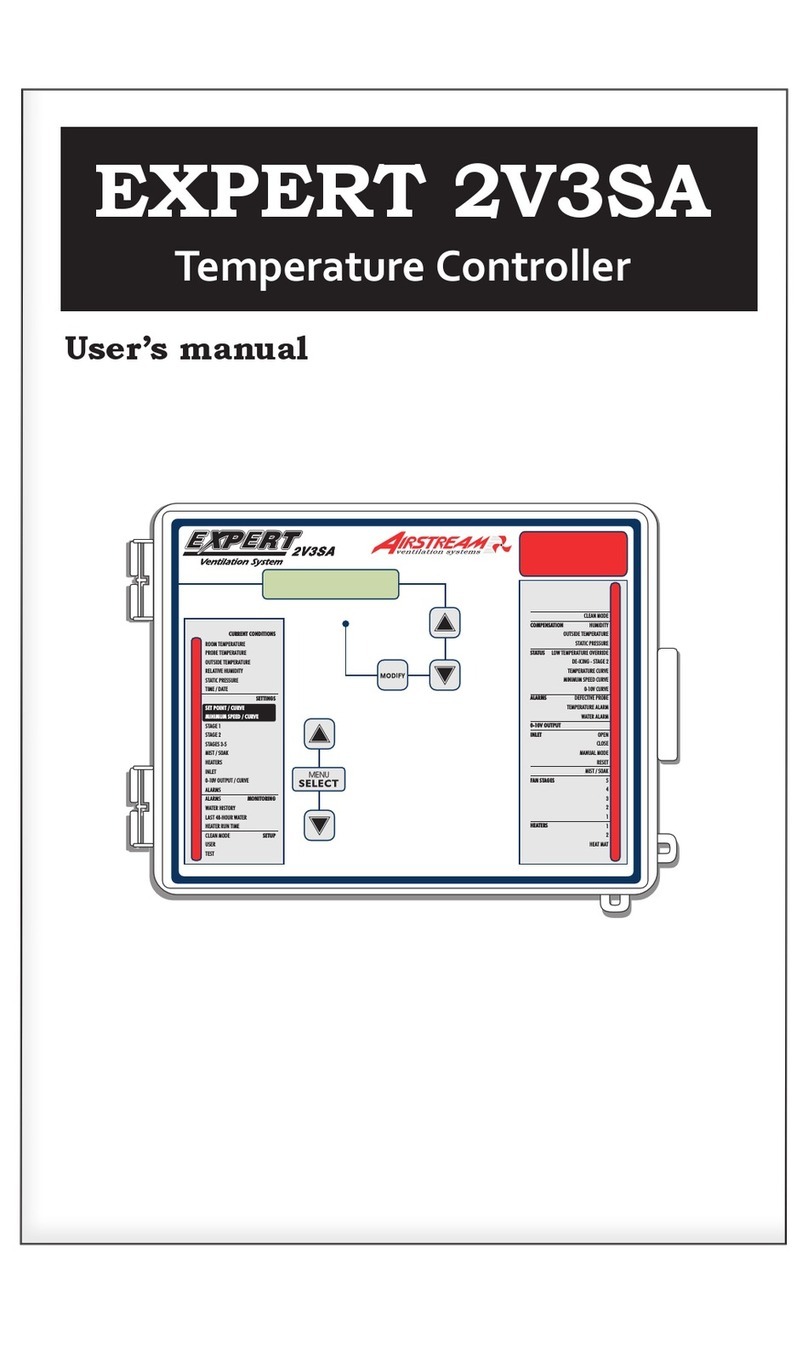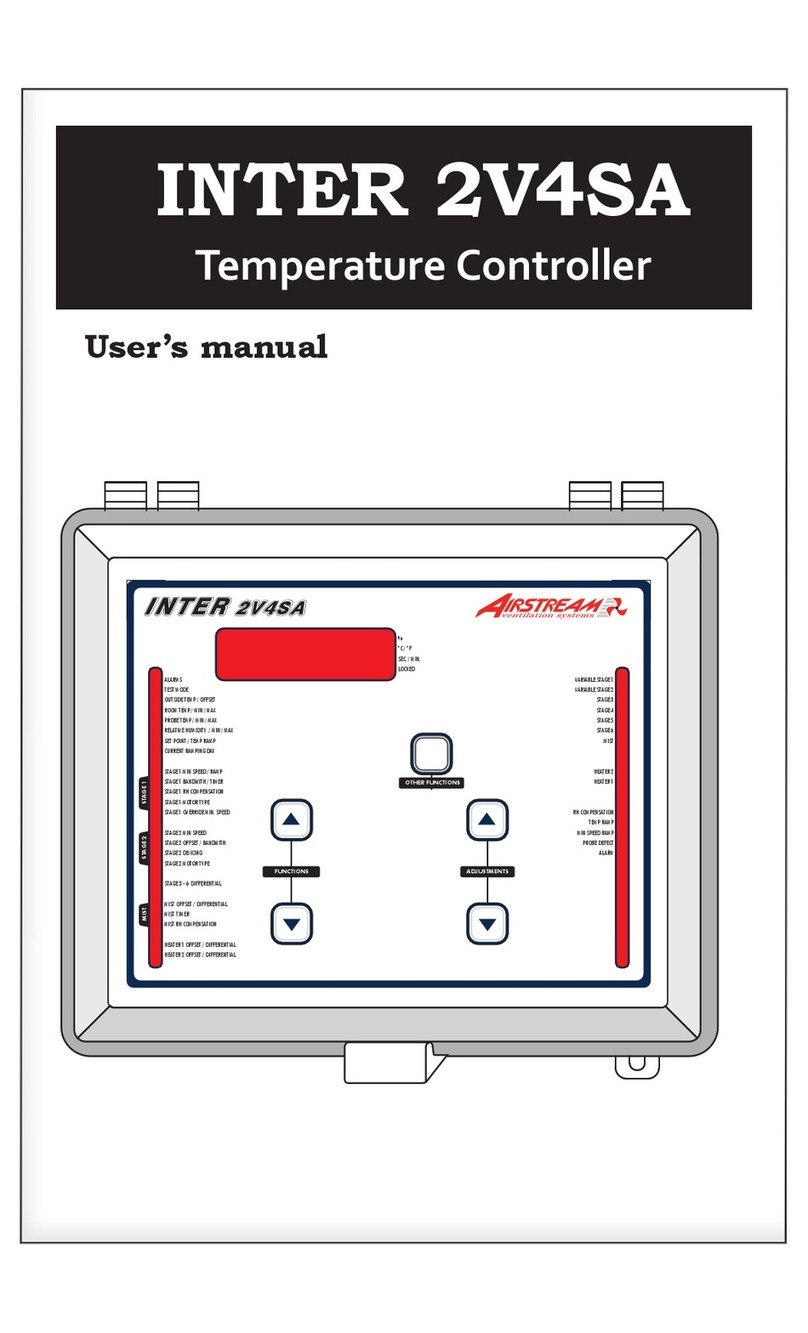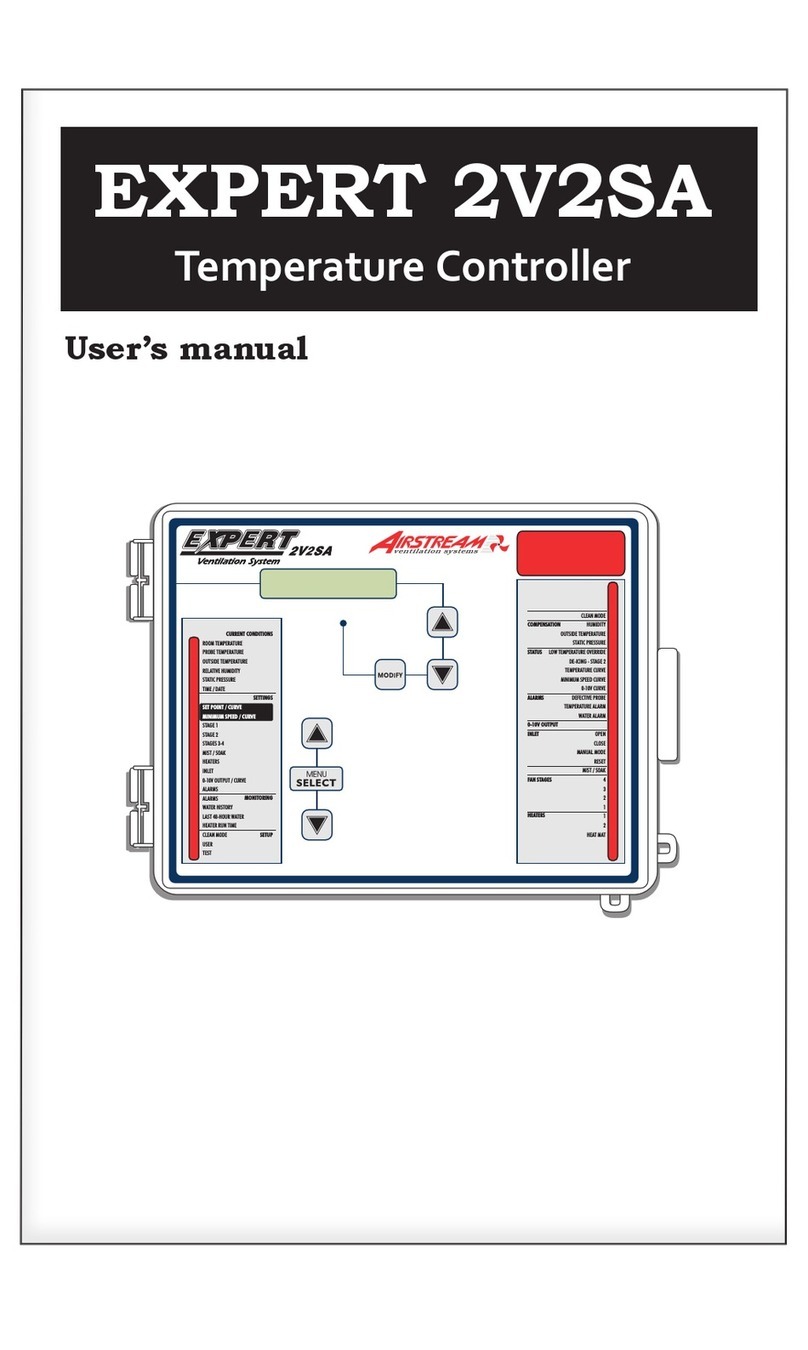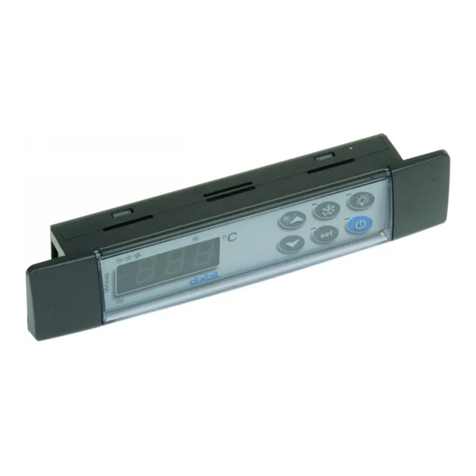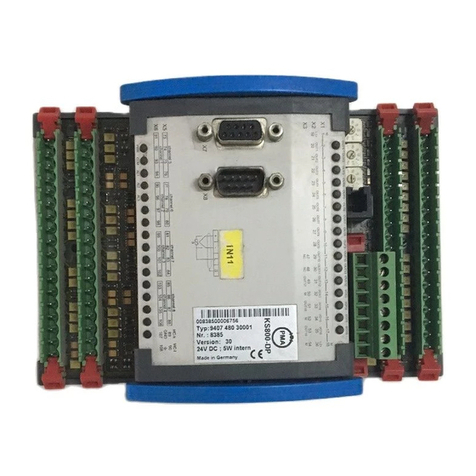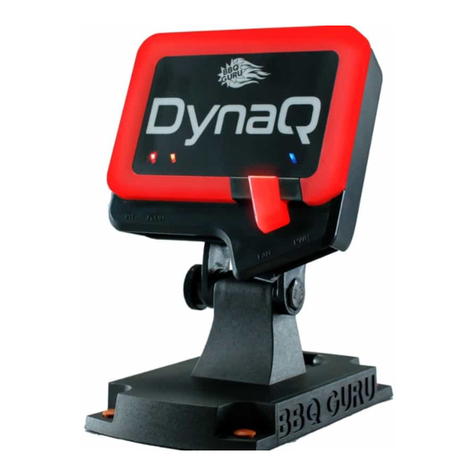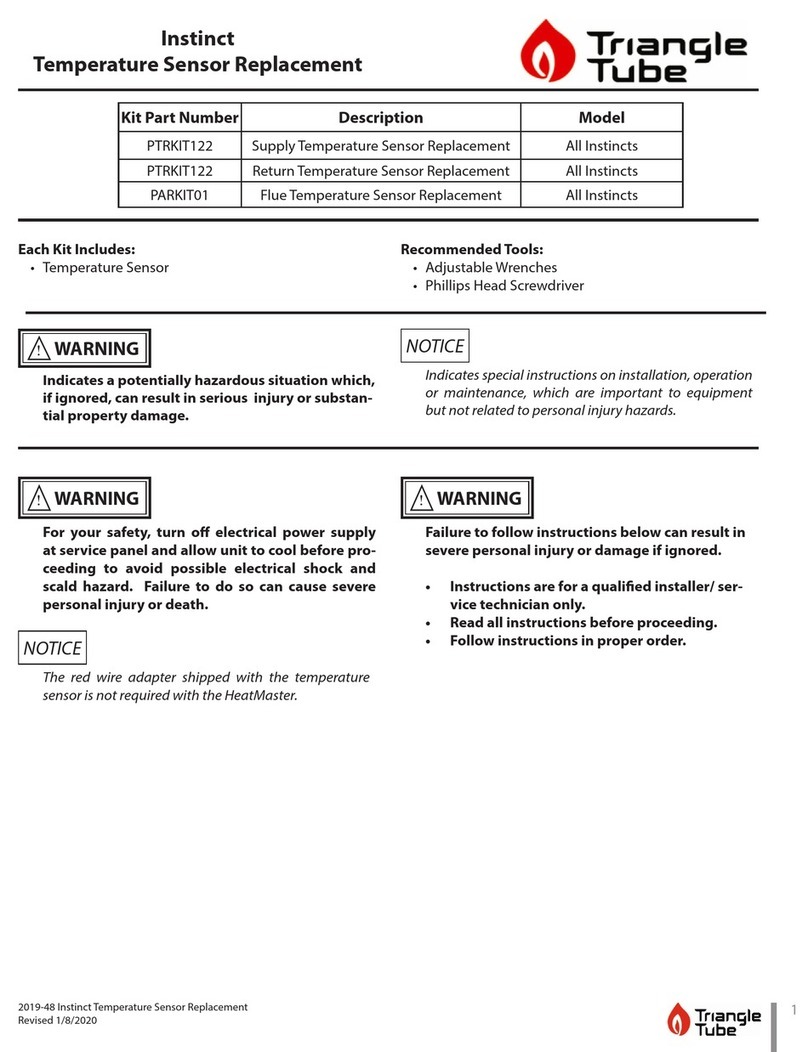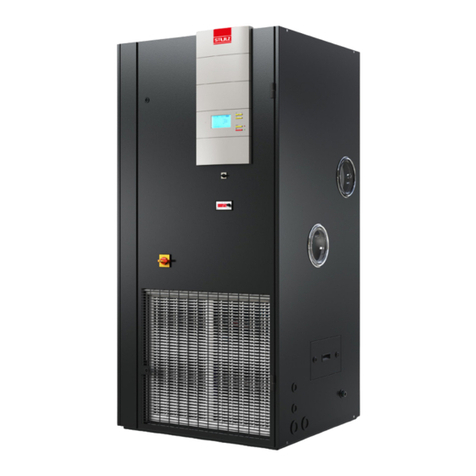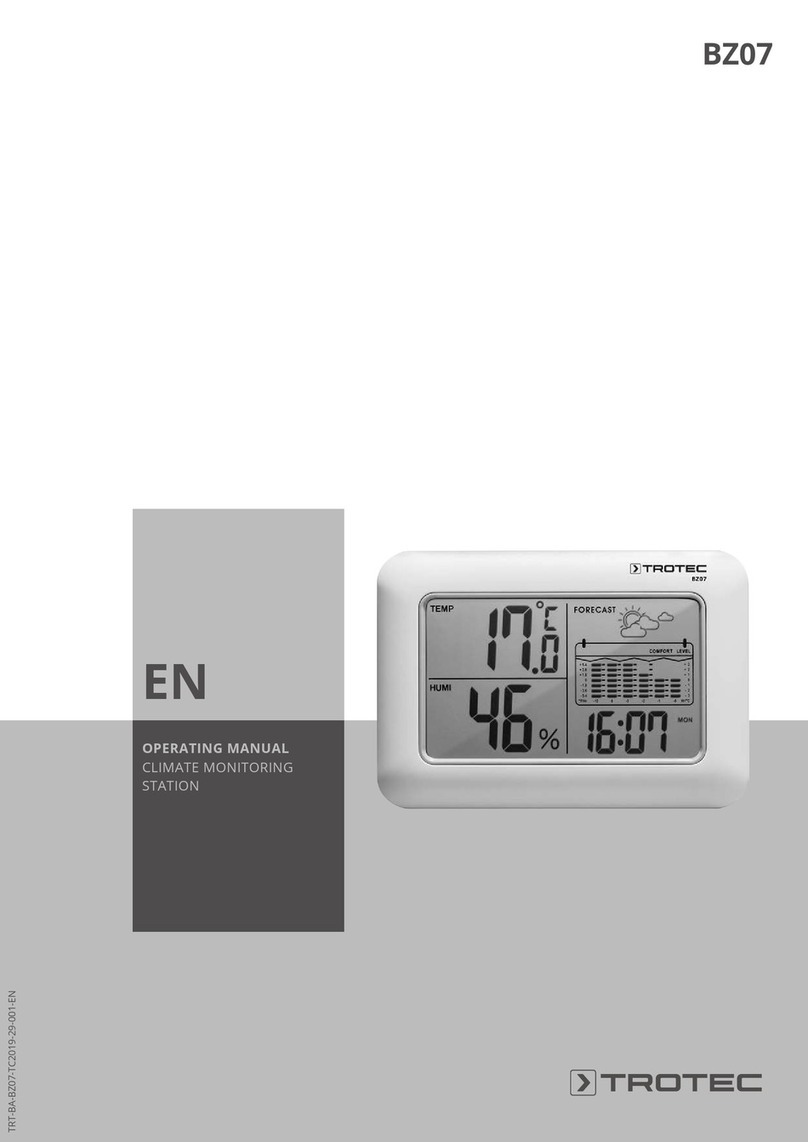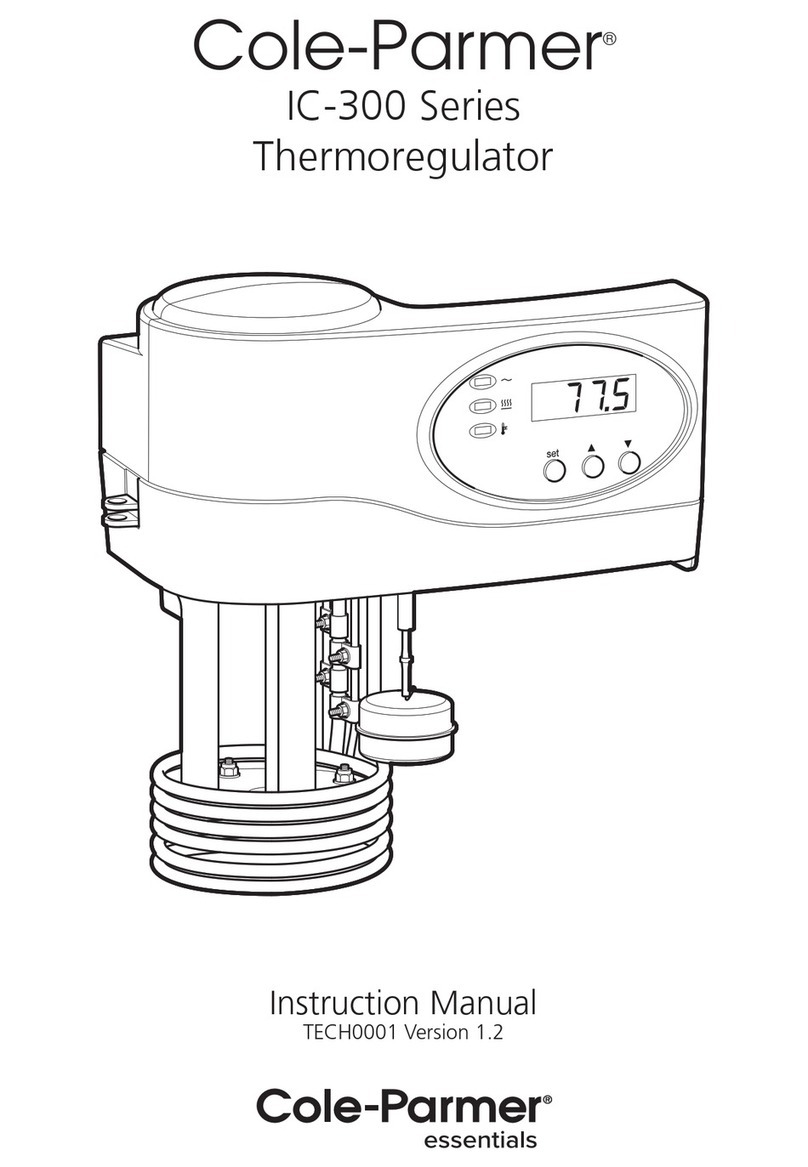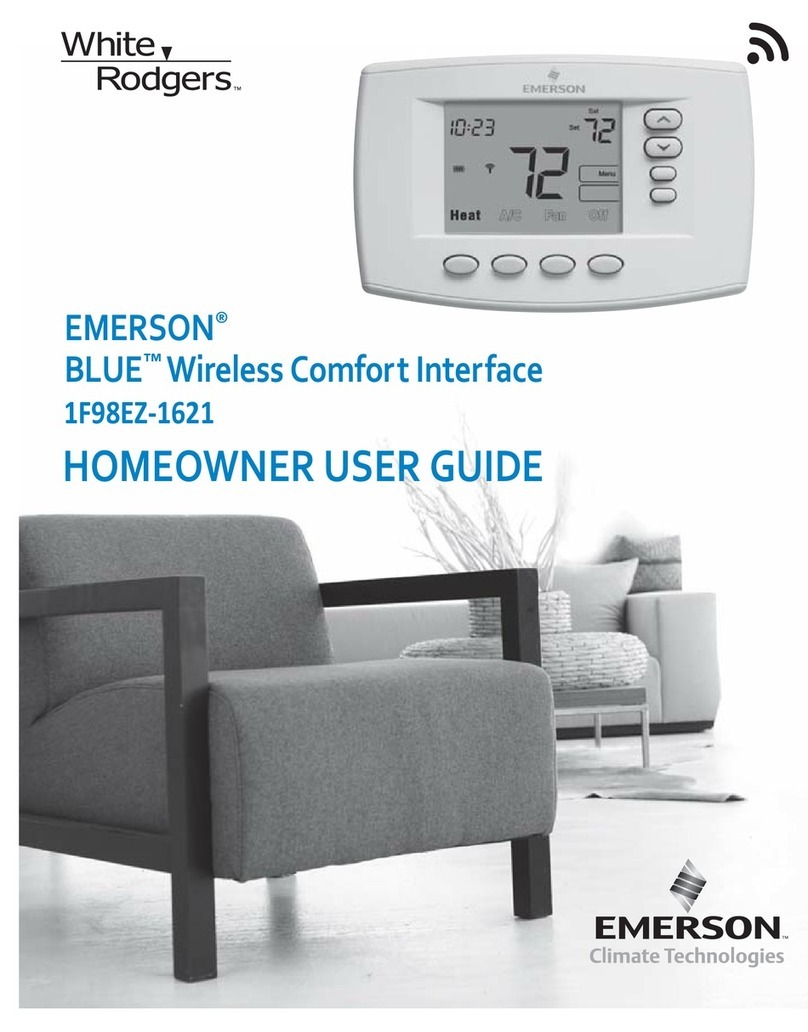Airstream TC5-2V4SA User manual

TC5-2V4SA
TemperatureController
USER'S MANUAL
HEATER 1
OFF. / DIFF. (T )
(T )
M 890-00103 rev. 06 REV. 00

2TC5-2V4SA rev.06
TABLE OF CONTENTS
PRECAUTIONS .............................................................. 3
FEATURES..................................................................... 4
LOCATION OF THE CONTROLS................................... 6
ControllerStatusLeds ...................................................... 7
InternalSwitches............................................................... 7
INSTALLATION .............................................................. 8
MountingInstructions ........................................................ 8
Connections ..................................................................... 8
MotorTypes ..................................................................... 9
Heating/CoolingOption ....................................................10
TemperatureProbes ........................................................11
CHANGING THE PARAMETER SETTINGS .................. 14
UsingtheDisplay..............................................................14
LockingtheParametersSettings...................................... 15
TEMPERATURE SETTINGS .......................................... 16
TemperatureUnits ............................................................16
ViewingTemperatures .....................................................16
TemperatureSetPoint .....................................................19
TemperatureCurve...........................................................20
VENTILATION SETTINGS.............................................. 24
CoolingOperation ............................................................24
MinimumVentilationCycle................................................26
HumidityCompensation ...................................................28
MinimumSpeedCurve ..................................................... 31
DifferentialSettings ..........................................................37
De-icing of Stage 2 Fans..................................................39
Mist Cooling .....................................................................41
HEATER SETTINGS....................................................... 44
ALARM SETTINGS......................................................... 49
TEST MODE.................................................................... 50
TROUBLESHOOTING GUIDE........................................ 51
TECHNICAL SPECIFICATIONS..................................... 55
FACTORY SETTINGS .................................................... 56
GLOSSARY..................................................................... 58
Page

3
TC5-2V4SA rev.06
We strongly recommend installing supplementary natural
ventilation as well as a back-up thermostat on at least one
cooling stage (refer to the wiring diagram enclosed with this
user's manual to connect the thermostat).
Although fuses at the input and outputs of the controller
protect its circuits in case of an overload or overvoltage, we
recommend installing an additional protection device on the
controller's supply circuit.
The room temperature where the controller is located MUST
ALWAYS REMAIN BETWEEN 32°F AND 104°F (0°C TO 40°C).
To avoid exposing the controller to harmful gases or exces-
sive humidity, it is preferable to install it in a corridor.
DO NOT SPRAY WATER ON THE CONTROLLER
PRECAUTIONS
FOR CUSTOMER USE
Entertheserialnumberlocatedonthe
sideofthecontroller below forfuture
reference.
Modelnumber:
Serialnumber: TC5-2V4SA

4TC5-2V4SA rev.06
The TC5-2V4SA is an electronic device used for environmental control in
livestock buildings. It allows the user to maintain a specified target tem-
perature by controlling the operation of ventilation and heating equipment.
Two stages of variable speed fans can be connected to the controller, as
well as two stages of constant-speed fans and two stages of either con-
stant-speedfansorheatingunits.Inaddition, one of the constant-speed fan
stages can be configured as a mist cooling stage.
ThemainfeaturesoftheTC5-2V4SAareas follows:
THREE-DIGITDISPLAY
A three-digit display provides a high level of accuracy, allowing the user to
specify a temperature to within one tenth of a degree (in Fahrenheit or Cel-
sius units).
PILOT LIGHTS
Pilot lights indicating the state of outputs allow the user to monitor the
operation of the system without having to enter the building.
MINIMUMVENTILATION CYCLE
Whenventilationisnotrequiredforcooling, the first stage fans can be oper-
atedeithercontinuouslyorintermittentlytoreducethelevelofhumidityand
supply oxygen to the room.
TEMPERATUREAND MINIMUM VENTILATIONSPEED CURVES
Thecontrollercanbeset to automatically change the temperature set point
andtheminimumventilation speed overagivenperiodof time inaccordance
withthe user's requirements by specifying a temperature curve and a mini-
mum ventilation speed curve with up to six different points each.
CHOICE OF TEN MOTOR TYPES
Thevariationin motor speed resulting from a change in voltage will depend
onthemakeandcapacityofthemotor. Inorderto achieve a high degree of
compatibilitybetweencontroller andmotor,theuser canchoosefromamong
tendifferent motor types, thus ensuring that the correct voltageissupplied.
ZONEDORCASCADING HEATERS
HIGH/LOW TEMPERATUREALARM OUTPUT
FEATURES

5
TC5-2V4SA rev.06
TC5-2V4SA
HUMIDITYCOMPENSATION
Thestage1 minimum speed can be adjusted automatically as a function of
relative humidity. As humidity increases, the minimum speed of stage 1
fans increases proportionally to compensate for the change.
FULL-SPEED FAN START-UP
In order to overcome the inertia of the ventilation system components and
de-ice the fan blades in cold weather conditions, the controller supplies
maximumvoltagetothevariable speed fans during the 2 seconds immedi-
ately following each start-up.
DE-ICINGCYCLE
Ade-icing cycle is provided for de-icing stage 2variable-speedfans in cold
weatherconditions.
FOURINDEPENDENT TEMPERATURE PROBE INPUTS
Uptofourtemperatureprobescan be connected to the controllerinorderto
obtain a more accurate reading of the average room temperature and a
faster reaction time.
OVERLOADAND OVERVOLTAGEPROTECTION
Fuses are installed at the input and outputs of the controller to protect its
circuitryinthecase of an overload or overvoltage.
COMPUTERCONTROL
The controller can be connected to a computer, thus making it possible to
centralizethemanagementof information and diversify control strategies.
CONTROL OF AIR INLET MOVEMENT
IftheTC5-2V4SA is used in combination with a PF-5B controller, the move-
mentoftheairinletscanbe coordinated with the operation of the fansusing
a potentiometer located on the panel drive. This allows the air inlets to be
adjusted correctly, without the influence of uncontrollable factors such as
windorair from adjoining rooms.
TEST MODE
Atestmodeallowsyoutosimulatetemperaturechangesandverifycontrol-
lerperformance.

6TC5-2V4SA rev.06
LOCATION OF THE CONTROLS
SETTINGS
FUNCTIONS

7
TC5-2V4SA rev.06
TC5-2V4SA
CONTROLLER STATUS LEDS
#OFF ON
1UNLOCKED PARAMETERS LOCKED PARAMETERS
2FAHRENHEIT DEGREES CELSIUS DEGREES
3PROBE 2 DISABLED PROBE 2 ENABLED
4PROBE 3 DISABLED PROBE 3 ENABLED
5PROBE 4 DISABLED PROBE 4 ENABLED
6NO HEATING STAGES HEATING
71 HEATER 2 HEATERS
8CASCADING HEATERS ZONED HEATERS
9MIST OFF MIST ON
10 RESERVED
11 RESERVED
12 RESERVED
INTERNAL SWITCHES
The internal switches are located on the inside of the front cover. When
the controller is shipped from the factory, all the switches are set to OFF.
ON
2
134 6 75 8 9 11
10 12
LED MEANING
STAGES 1-2 FLASHES WHEN STAGE 1 FANS ARE ON AND STAYS ON WHEN
STAGE 2 FANS ARE ON.
STAGES 3-4 FLASHES WHEN STAGE 3 FANS ARE ON AND STAYS ON WHEN
STAGE 4 FANS ARE ON.
STAGE 5 /
HEATER 2 TURNS ON WHEN STAGE 5 FANS OR HEATING UNITS ARE ON.
STAGE 6 /
HEATER 1 TURNS ON WHEN STAGE 6 FANS OR HEATING UNITS ARE ON.
To /MIN.SPEED
CURVE FLASHES WHEN THE TEMPERATURE CURVE IS ACTIVATED. TURNS
ON WHEN THE MINIMUM VENTILATION SPEED CURVE IS ALSO ON.
DEF. PROBE/
ALARM TURNS ON WHEN AN ALARM IS DETECTED. BLINKS WHEN A
DEFECTIVE PROBE IS DETECTED
LOCKED TURNS ON WHEN THE PARAMETERS ARE LOCKED.
COMPENSATION TURNS ON WHEN THE COMPENSATION ON STAGE 1 MINIMUM
VENTILATION SPEED IS IN EFFECT OR WHEN THE COMPENSATION
ON THE MIST STAGE IS IN EFFECT.

8TC5-2V4SA rev.06
Toconnectthecontroller,refertothewiringdiagramenclosedwiththisuser's
manual.
nSet the voltage switch to the appropriate voltage.
nUse the electrical knockouts provided at the bottom of the enclosure.
Donotmake additionalholesinthe enclosure,particularlyonthe side
oftheenclosurewhenusingacomputercommunicationsmodule.
nIf Stage 5 or 6 is used for heating, it may be necessary to install a
transformerinordertosupplytheappropriatevoltagetotheheatingunit.
ALARMCONNECTION: Therearetwotypesofalarmsonthemarket. One
typeactivateswhencurrentiscutoffatitsinput,whereastheotheractivates
whencurrentissuppliedatitsinput. Foranalarmofthefirsttype,usetheNO
terminalasshownonthewiringdiagram. Foranalarmofthesecondtype,use
theNCterminal.
ALL WIRING MUST BE DONE BY AN AUTHORIZED ELECTRI-
CIAN AND MUST COMPLY WITH APPLICABLE CODES, LAWS
AND REGULATIONS. BE SURE POWER IS OFF BEFORE DO-
INGANYWIRINGTOAVOIDELECTRICALSHOCKSANDEQUIP-
MENT DAMAGE.
INSTALLATION
MOUNTINGINSTRUCTIONS
CONNECTIONS
Openthelatchandliftthecover.Removetheblackcapslocatedoneachof
thefourmountingholes. Mounttheenclosureonthewallusingfourscrews.
Besure the electrical knockouts are at the bottom oftheenclosurein order
topreventwaterfromenteringthecontroller.Insertthescrewsinthemounting
holesandtighten. Fastenthefourblackcapsprovidedwiththecontrolleronto
the four mounting holes. The enclosure must be mounted in a location that
will allow the cover to be completely opened right up against the wall.
!
WARNING

9
TC5-2V4SA rev.06
TC5-2V4SA
The relationship between the voltage supplied to a motor and its operating
speed is described by a motor curve. This curve varies with the make and
capacityofthemotor. Thevariousmotorsavailableintheindustryhavebeen
dividedinto ten categories and the controller has been programmedwitha
different motor curve for each of these categories. To ensure that the
controller supplies the correct voltages, an appropriate curve must be
selected for Stage 1 and Stage 2 according to the type of fan motors used.
1
Selecting a Motor Type for Stage 1
Refertothelistofmotorsenclosedwiththisuser'smanualtodeterminewhich
type number (1 to 10) is appropriate for the motors used.
nSet the selection knob to STAGE
1 — BANDWIDTH/TIMER. The
Stage 1 bandwidth is displayed
andflashes.
nPressthepush-buttonthreetimes.
Thecurrentlyselectedmotortype
is displayed, alternating with the
letters"tYP".
nUsetheadjustmentknobtoadjustthemotortypetothedesiredvalue.
nReturn to the Stage1bandwidthdisplay by pressingthepush-button
once again.
2
Selecting A Motor Type for Stage 2
Refertothelistofmotorsenclosedwiththisuser'smanualtodeterminewhich
type (1 to 10) is appropriate for the motors used.
MOTOR TYPES

10 TC5-2V4SArev.06
TC5-2V4SA
HEATING / COOLING OPTION
67
ON
nSet the selection knob to STAGE 2 — OFFSET/BANDWIDTH.
The offset is displayed, alternating with the letters "OFT".
nPress the push-button twice. The currently selected motor type
flashes.
nUsetheadjustmentknobtoadjustthemotortypetothedesiredvalue.
nReturn to the Stage 2 offset display by pressing the push-button
once again.
Stages 5 and 6 can operate as heating or cooling stages.
ðSet switches # 6 and # 7 to OFF to
use both stages for cooling.
ðSet switch # 6 to ON and switch # 7
to OFF to use Stage 6 for heating
and Stage 5 for cooling.
ðSet switches # 6 and # 7 to ON to
use both stages for heating.
Note that if only one stage is used for heating, it must be Stage 6.

11
TC5-2V4SA rev.06
TC5-2V4SA
1
Connecting the Probes
The controller is supplied with one temperature probe connected to input
#1. Uptothreeadditionalprobescanbeconnectedtothecontrollerinorder
to obtain a more accurate reading of the average room temperature and a
faster reaction time.
nUseinputs# 2, 3 and 4 to connect additional probes, as shown on the
wiring diagram enclosed.
CAUTION: Probesoperateatlowvoltageandareisolatedfromthesupply.
Besurethatprobe cables remainisolatedfromallhigh voltage sources. In
particular,donotroutetheprobecablesthroughthesameelectricalknockout
asothercables. Donotconnecttheshieldfromtheprobecabletoaterminal
or a ground.
Switchesareusedtoactivateordeactivatetheadditionalprobesconnected
to the controller.
nActivate each additional probe by setting
the appropriate switch to ON:
• Switch # 3 activates the probe connected to input # 2.
• Switch # 4 activates the probe connected to input # 3.
• Switch # 5 activates the probe connected to input # 4.
TEMPERATUREPROBES
345
ON

12 TC5-2V4SArev.06
TC5-2V4SA
2
Extending the Probes
Eachprobecanbeextendedupto500feet(150meters). Toextendaprobe:
nUseashieldedcableofoutsidediameterbetween0.245and0.260in
(6.22 and 6.60 mm) (the cable dimensions should not be under 18
AWG) to ensure the cable entry is liquid tight. Do not ground the
shielding.
nIt is preferable to solder the cable joint to ensure a proper contact
betweenthetwo cables.
CAUTION: Donotrunprobe cables next tootherpowercables. When
crossing over other cables, cross at 90°.
3
Defective Probes
Ifadefectiveprobeisdetected,theDefectiveProbePilotLightturnson.The
room temperature shown on the display is then the average temperature
measured by the probes in working condition. The controller will operate
according to this temperature.
To identify the defective probe:
nSettheselectionknobtoROOM
TEMPERATURE . The room
temperature is displayed.
nPress the push-button. If the
probeconnectedtoinput#1and
suppliedwiththecontrollerisnot
defective, the letters"PR1" are
displayed,alternatingwiththeon/
offstate oftheprobeandthetem-
peraturemeasuredbythe probe.
If the probe is defective, the let-
ters "PR1" are displayed, alter-
natingwiththestateoftheprobe

13
TC5-2V4SA rev.06
TC5-2V4SA
and the letter "P".
For each additional probe connected to the controller:
nPress the push-button once again. If the probe is not defective, the
letters "PR#" (where # is the number of the input to which the probe
is connected) are displayed, alternating with the on/off state of the
probe and the temperature measured by the probe. If the probe is
defective, the letters "PR#" are displayed, alternating with the on/off
state of the probe and the letter "P".

14 TC5-2V4SA rev.06
Flashing Values: The dis-
playwillflashincertaincases
and not in others. The flash-
ing indicates that the value
shown can be adjusted. A
valuethatis not flashing can-
notbe adjusted.
CHANGING THE PARAMETER SETTINGS
USING THE DISPLAY
RelativeandAbsoluteValues: Someparameteradjustmentsaredisplayed
bothasarelativevalueandanabsolutetemperature. Thisappliestoallheating
andcoolingdifferentials,themistdifferentialandthemistandheateroffsets.
The parameter is first displayed as a relative value. The corresponding
absolute temperature is displayed after six seconds if no action is taken by
the user. The absolute value is the temperature at which the stage turns on
(exceptinthecaseoftheheaterandmistoffsetwherethevaluedisplayedis
thetemperatureatwhichthestageturnsoff). Iftheuserturnstheadjustment
knob, the relative value reappears. For example, when the user turns the
selection knob to a differential position, i.e. DIFFERENTIALS 3-6, the
sequence is as follows:
(i) Thecurrentdifferential forstage3 flashesonthe display,alternatingwith
"St. 3".
78.0
(ii) If, after about 6 seconds, no action is taken by the user, the absolute
temperature value is displayed, alternating with "St. 3". In this case, the
absolute value is: Set Point + Bandwidth 1 + Offset 2 + Bandwidth 2 +
Differential 3.
St. 3 2.0

15
TC5-2V4SA rev.06
TC5-2V4SA
The parameter settings can be locked to prevent accidentally modifying
them. Whenthesettingsarelocked,onlythetemperaturesetpointandthe
Stage 1 minimum ventilation speed can be modified (as long as the tem-
perature curve and the minimum ventilation speed curve are deactivated
respectively).
Tolock the parameter settings:
nSetinternalswitch # 1 toON. The Locked Parameter Pilot Light turns
on.
Tounlock the parameter settings:
nSet internal switch # 1 to OFF. The Locked Parameter Pilot Light
turns off.
LOCKING THE PARAMETER SETTINGS
2.3
(iii) Whentheuser turns the adjustment knob to make an adjustment to the
stage 3 differential, the relative value reappears on the display.
St. 3 78.0
Inthecaseofthemistandheatingunits,thestartingtemperatureisdisplayed
with the letters "STr" when adjusting the differential and the stopping
temperature is displayed with the letters "STP" when adjusting the offset.

16 TC5-2V4SA rev.06
Temperatures can be displayed in either Celsius or
Fahrenheitunits
nSet internal switch # 2 to the desired position:
• ON to display temperatures in Celsius units.
• OFF to display temperatures in Fahrenheit units.
TEMPERATURE SETTINGS
To display the desired temperature, set the selection knob to ROOM
TEMPERATURE. Thereadoutcandisplayvaluesfrom-40.0oFto120.0oF
( -40.0oC to 48.9oC).
1
Viewing Room Temperature
Theroomtemperature istheaveragevalue ofalltemperaturesmeasured
by activated probes in proper operating condition.
nSetthe selection knob to ROOM TEMPERATURE / PROBE To.The
room temperature is displayed.
2
Viewing Probe Temperatures
Thecontrollercandisplayprobetemperaturesindividually. Probescanalso
beturnedonoroff tocontrolthetemperatureindifferentpartsofthebuilding.
TEMPERATUREUNITS
VIEWING TEMPERATURES
ON
2

17
TC5-2V4SA rev.06
TC5-2V4SA
nSet selection knob to ROOM TEMPERATURE / PROBE To.The av-
erage room temperature is displayed.
nPress the push-button. The temperature reading from probe 1 is
displayed, alternating with the letters "Pr 1" and the on/off state of
probe 1.
nFor each additional probe, press the push-button. The temperature
reading from probe x is displayed, alternating with the letters "Pr x"
and the on/off state of the probe, etc.
Note: The display returns to the average room temperature after one
minute.
3
Viewing Minimum / Maximum Temperatures
Theminimumandmaximumtemperaturesarethelowestandhighesttem-
perature values recorded since the last reset. Maximum and minimum
temperaturevaluesarerecordedfortheaverageroomtemperatureaswell
as for individual probe temperatures.
nSet the selection knob to ROOM TEMPERATURE / PROBE TEMP.
The room temperature is displayed.
nTurn the adjustment knob clockwise by one notch. The minimum
temperature is displayed, alternating with the letters "Lo".
nTurntheadjustmentknobclockwiseone notch further. The maximum
temperature is displayed, alternating with the letters "Hi".
nTurn the adjustment knob clockwise a third notch. The room tempera-
ture is displayed again.
nForeachindividualprobe, press the push-button. Thetemperatureread-
ing from probe x is displayed, alternating with the letters "Pr x" and the
on/off state of the probe.

18 TC5-2V4SArev.06
TC5-2V4SA
nTurn the adjustment knob clockwise by one notch. The minimum
temperature is displayed, alternating with the letters "Lo".
nTurntheadjustmentknobclockwiseone notch further. Themaximum
temperature is displayed, alternating with the letters "Hi".
nTurn the adjustment knob clockwise a third notch. The probe tem-
perature is displayed again.
nPress the push-button to access the other probes, etc.
NOTE: If you let the display flash for more than 10 seconds, the control-
ler resets the minimum and maximum temperatures currently in memory
(the display stops flashing to indicate that the reset has been done).

19
TC5-2V4SA rev.06
TC5-2V4SA
TEMPERATURE SET POINT
The temperature set point is the target room temperature. It can be ad-
justed between -40.0°F and 99.9°F (-40.0°C and 37.7°C).
Adjusting Temperature Set Point
nSet the selection knob to SET POINT / ToCURVE.The current set
point flashes on the display.
nUsetheadjustmentknobtoadjustthesetpointtothedesiredvalue.
NOTE: Thetemperaturesetpointcanbeadjustedonlyifthetemperature
curve is deactivated (see following section).

20 TC5-2V4SArev.06
TC5-2V4SA
Theusercandefineatemperaturecurvetoadjustthesetpointautomatically
over a given time period.
TEMPERATURECURVE
Temperature
Days
To1
To2
To3
To4
To5
To6
d4 d25 d35 d50 d70 d80
A curve is defined using six points. Each point specifies a day number and
a set point for that day. Once the points of the curve are defined, the curve
mustbeactivated. Thecontrollerwillchangethetemperaturesetpointevery
hourinalinearfashion betweenconsecutivepoints ofthecurve. When the
last point of the curve is reached, the temperature set point for that day is
maintained until the curve is reactivated.
NOTES:
i)Allsixpointsofthecurvemustbespecified. Ifsixpointsarenotneeded,
repeat the last temperature value for each unnecessary point.
ii) Certain restrictions apply to reduce the risk of errors:
− The highest possible day number is 99.
−Decreasing day numbers are not allowed.
−Increasing temperaturesarenotallowed.
− The temperature variation cannot exceed 3°F (1.6°C) per day.
Table of contents
Other Airstream Temperature Controllers manuals
Popular Temperature Controllers manuals by other brands

nvent
nvent Raychem RTD7AL installation instructions
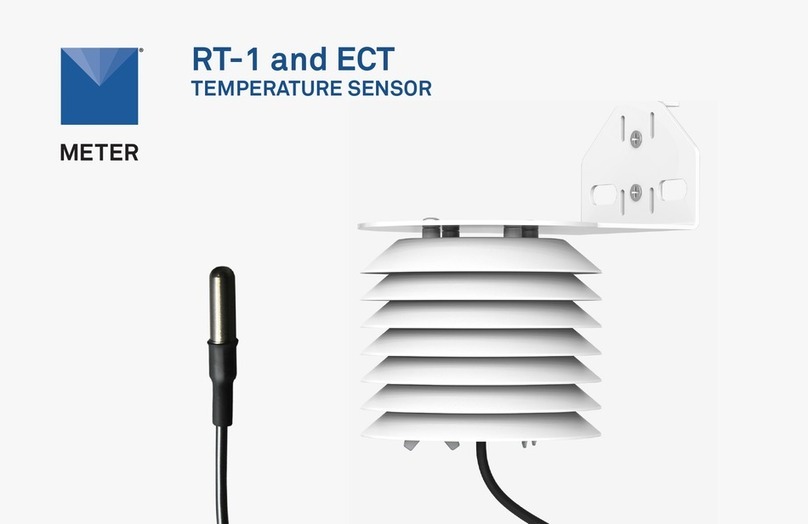
METER
METER RT-1 quick start guide
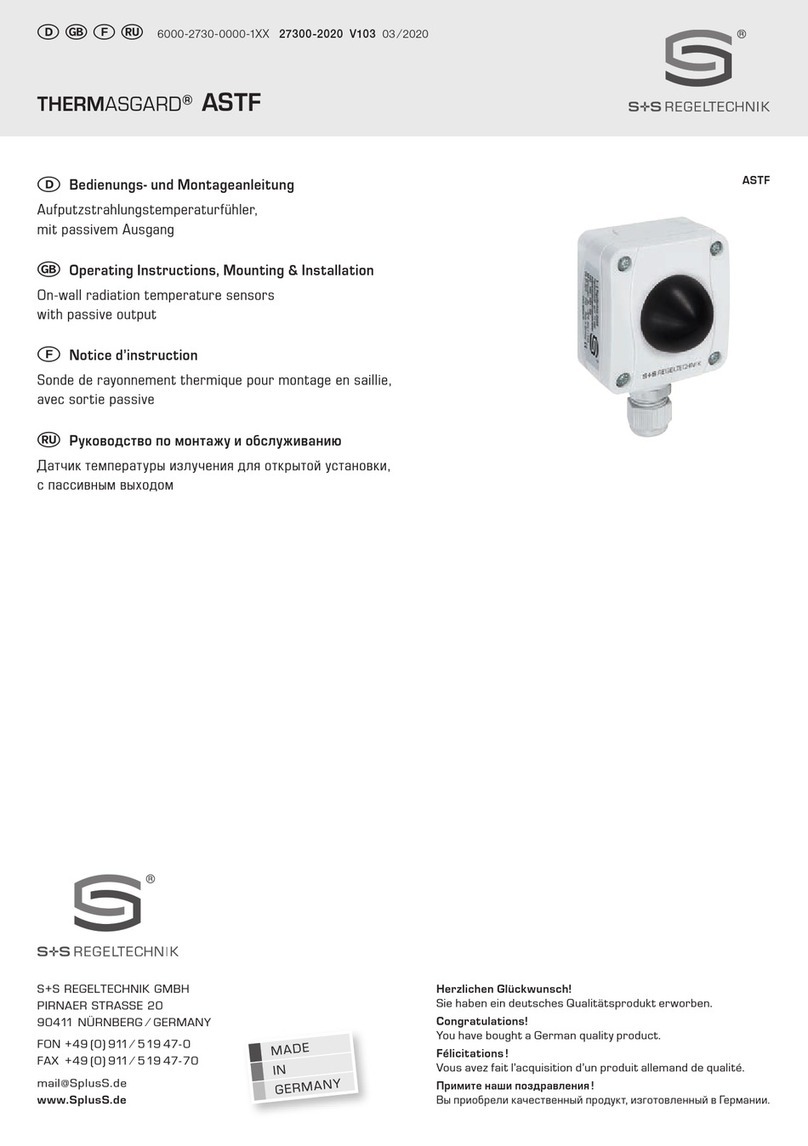
S+S Regeltechnik
S+S Regeltechnik THERMASGARD ASTF Operating Instructions, Mounting & Installation
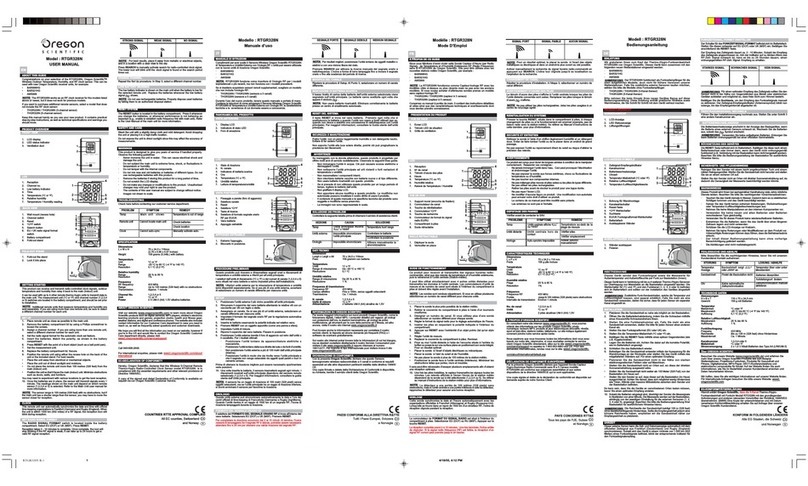
Oregon Scientific
Oregon Scientific RTGR328N user manual
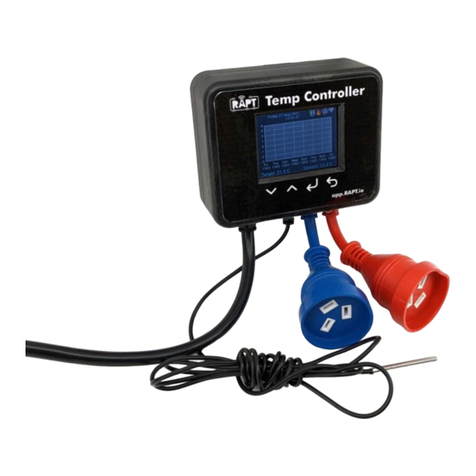
KegLand
KegLand RAPT KL22927 instruction manual

Elsner
Elsner Cala KNX T 101 CH Installation and adjustment
